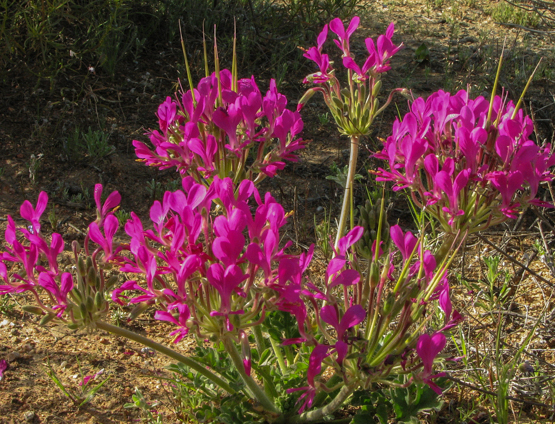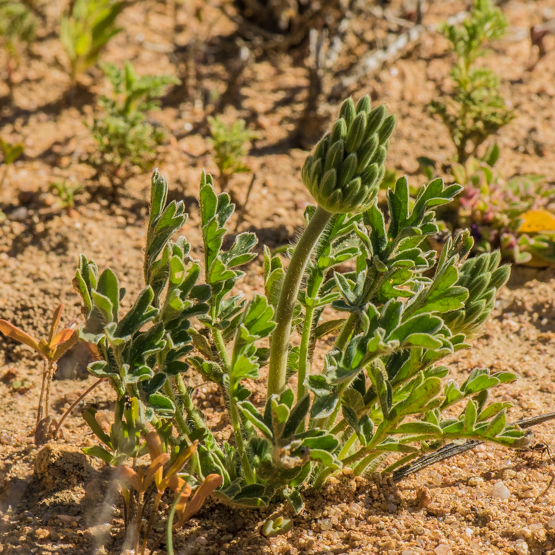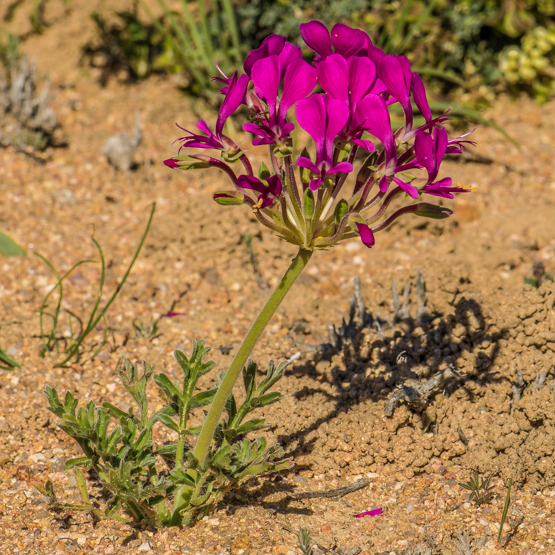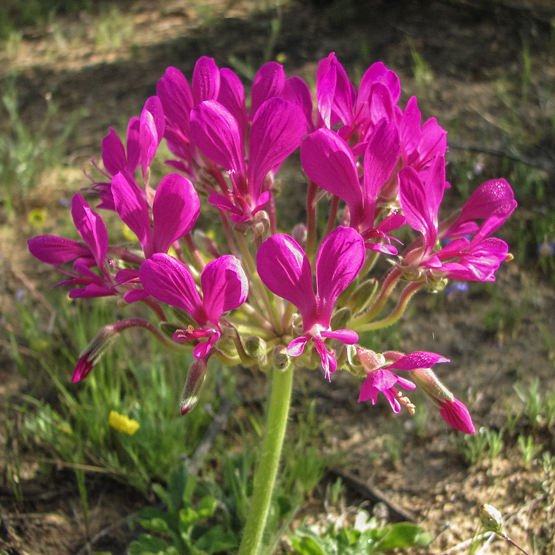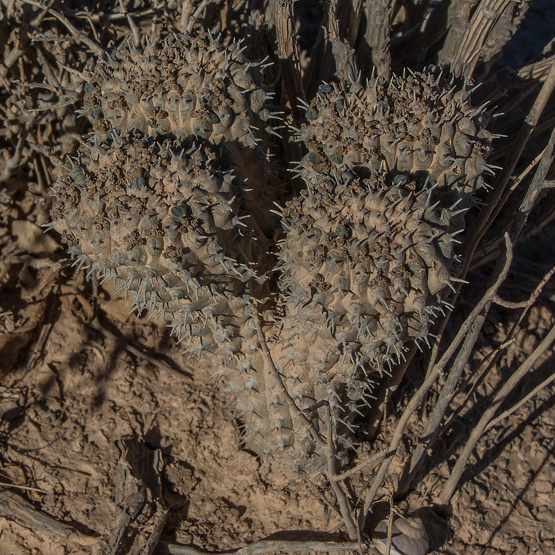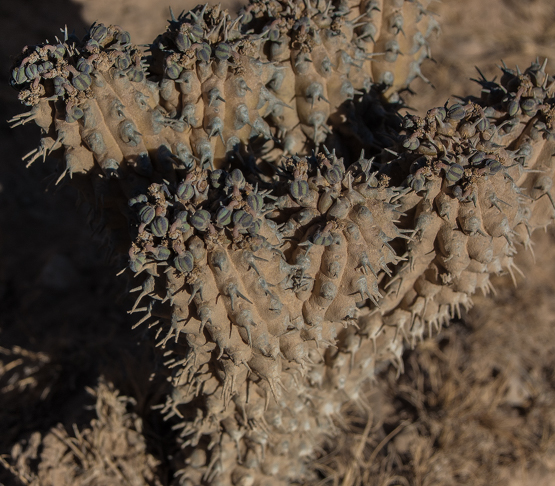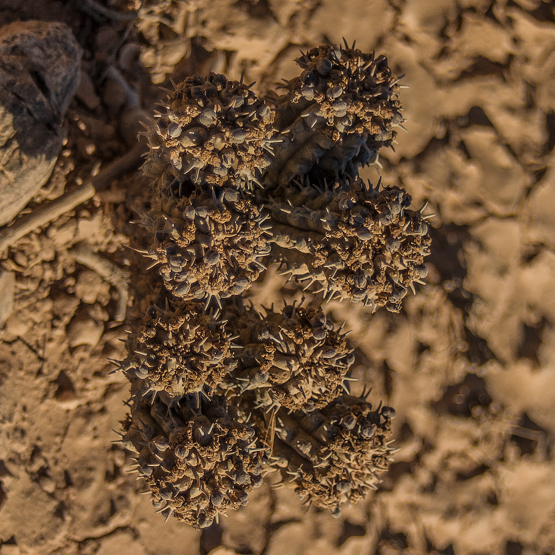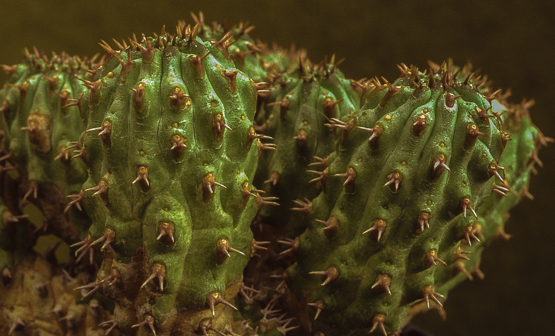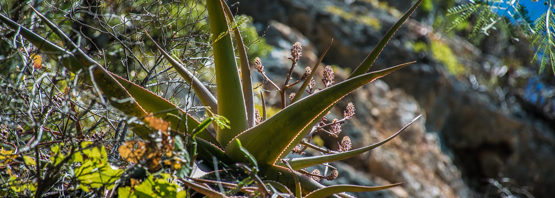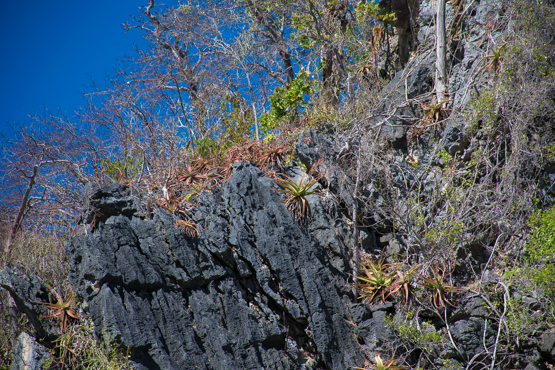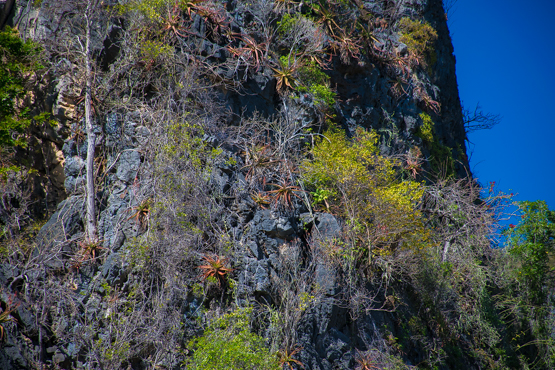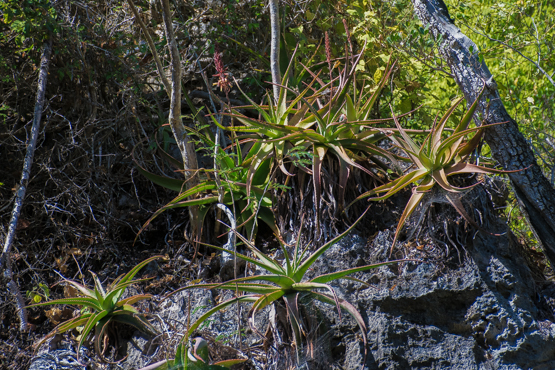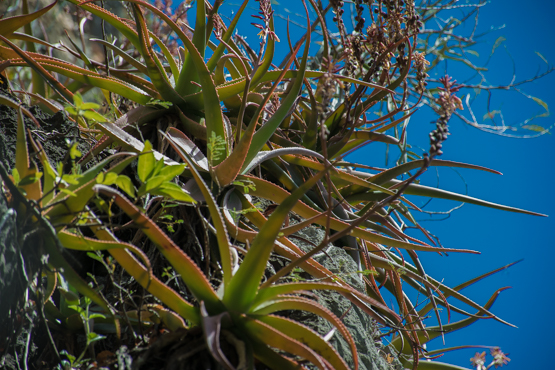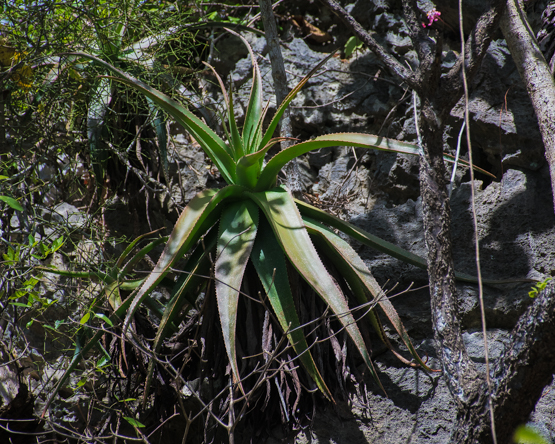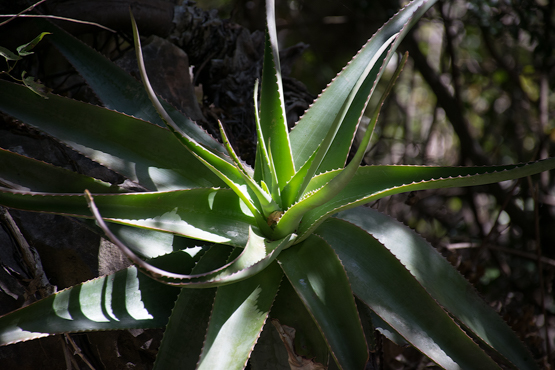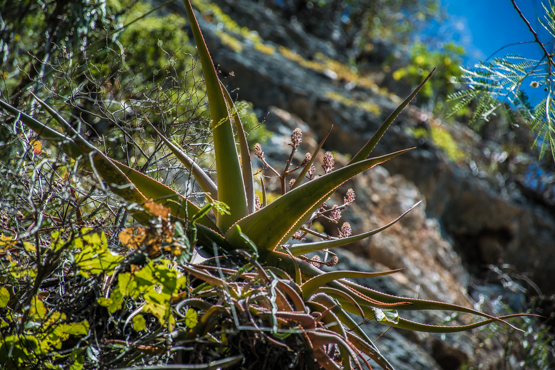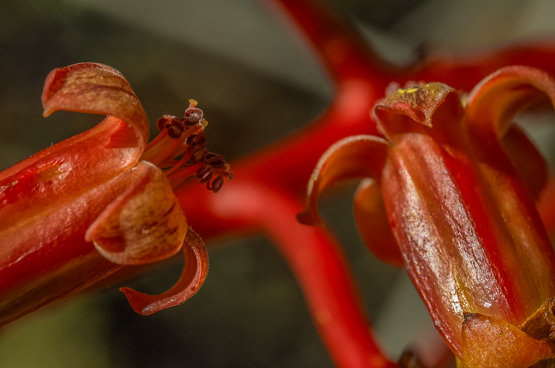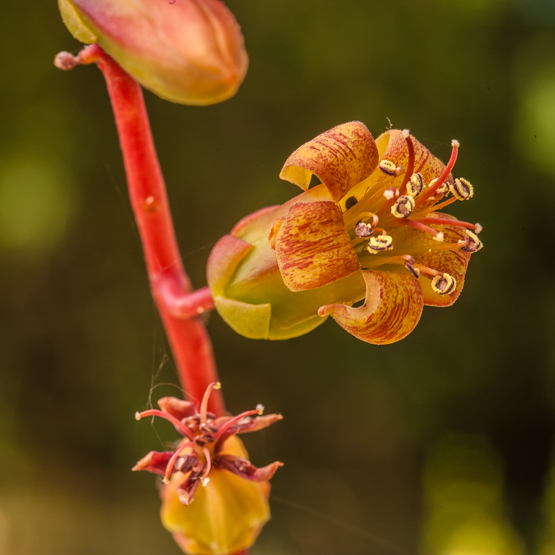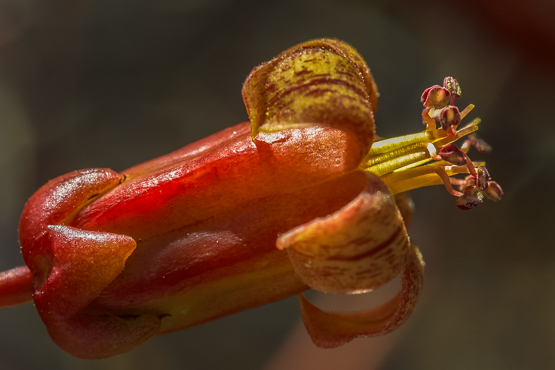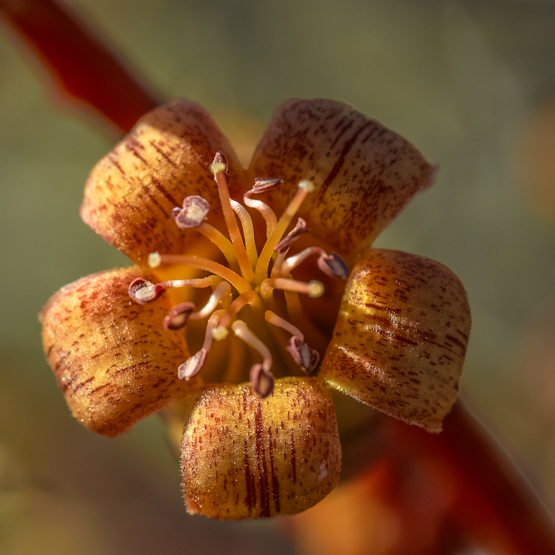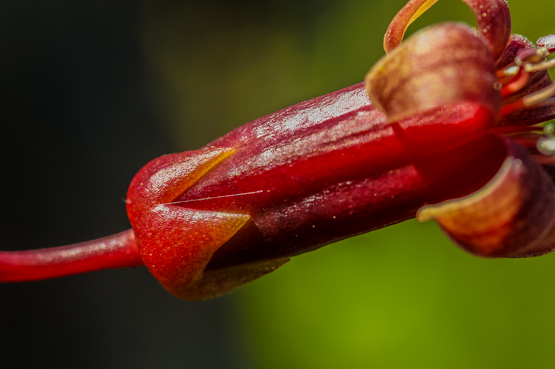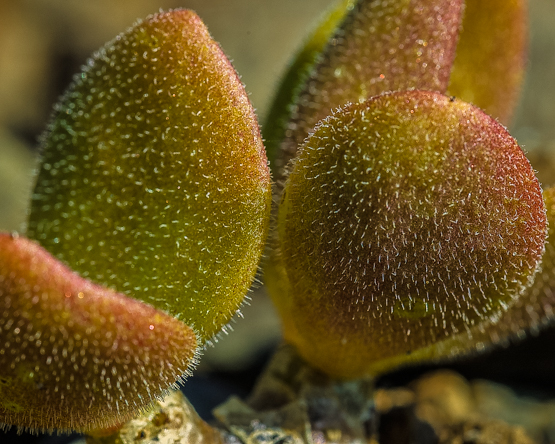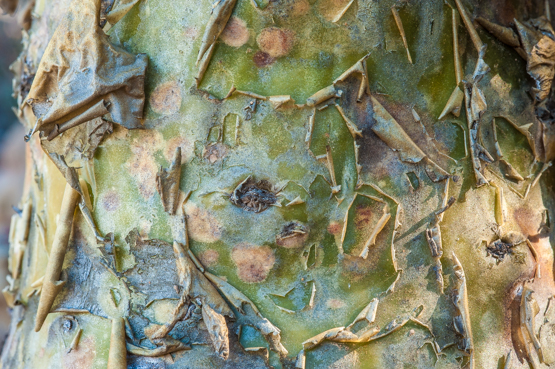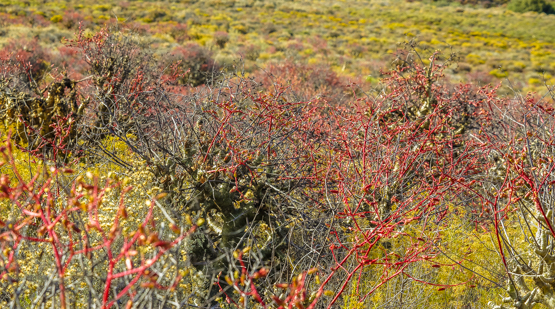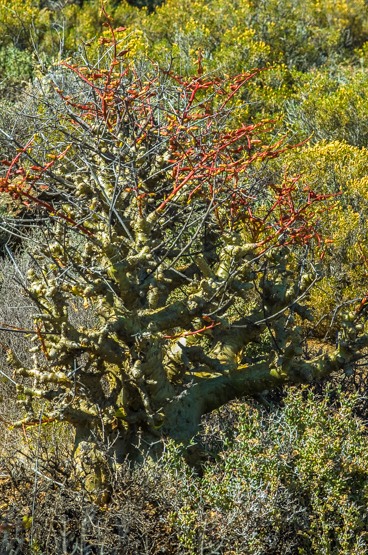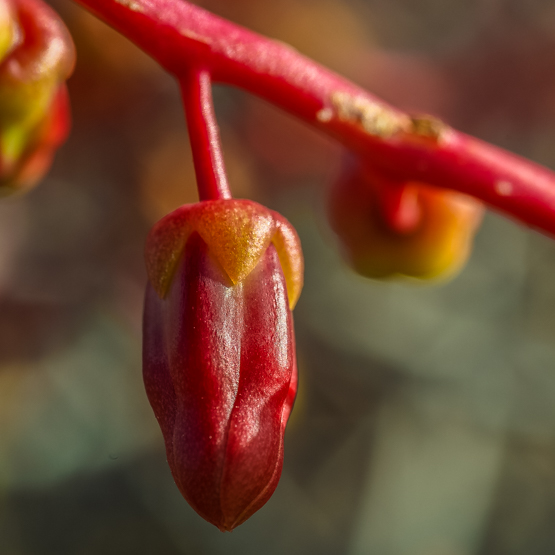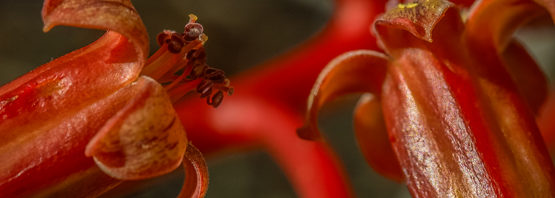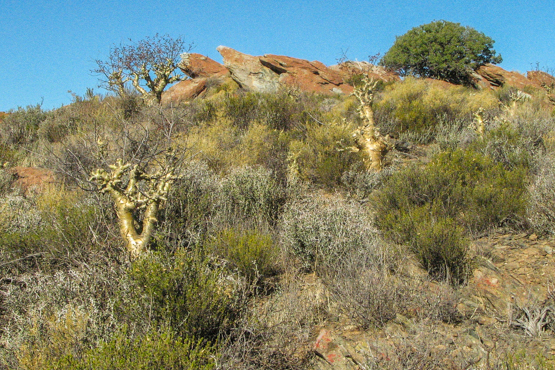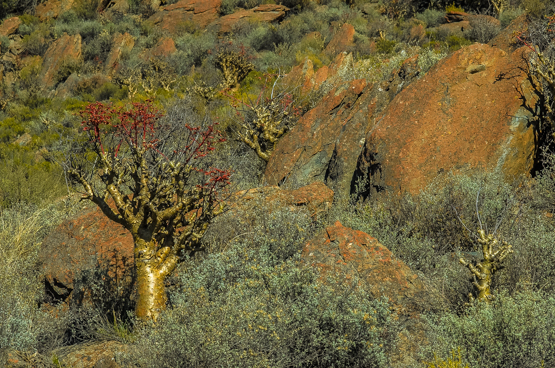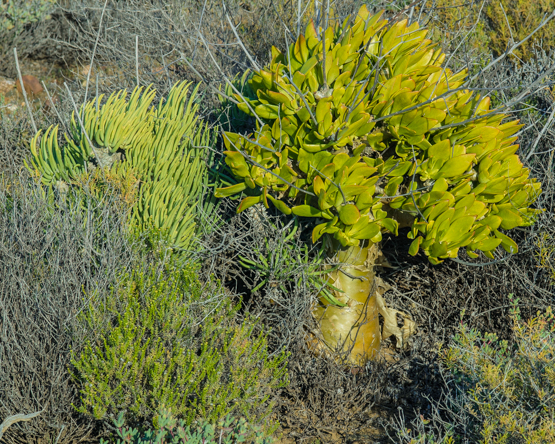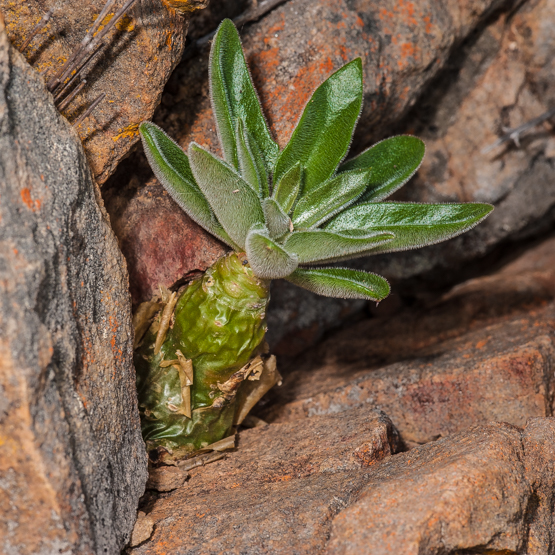In her book “Namaqualand in flower” (1972), Sima Eliovson referred to this species as follows:
“Quite the most outstanding Pelargonium in Namaqualand, this has thick clusters of brilliant cerise-purple flowers that grow beside the brightest annuals and can be spotted from afar. They generally lie scattered in little clearings among orange daisies in the fields around Springbok amd Kamieskroon, where they are plentiful.”
Charles Craib in his beautiful and interesting book “Geophytic Pelargoniums” (2001), calls the species “one of South Africa’s most spectacular flowering plants.”
The plants are tuberous geophytes occurring in a narrow strip along South Africa’s west coast, from near the northern part of the Richtersveld to the Nardouw flats in the south.
Although the summers are very hot here, in winter it may be freezing cold.
The rainfall varies between 150 and 300 mm per year, mainly in winter.
When in flower, the plants are 20 to 30 cm tall. The flowers appear from August to October, usually with 20-40 (sometimes as many as 60) together in a large cluster on a single stalk. They show a wide range of colours, from red and pinkish purple to mauve, pale lilac and even nearly white.
